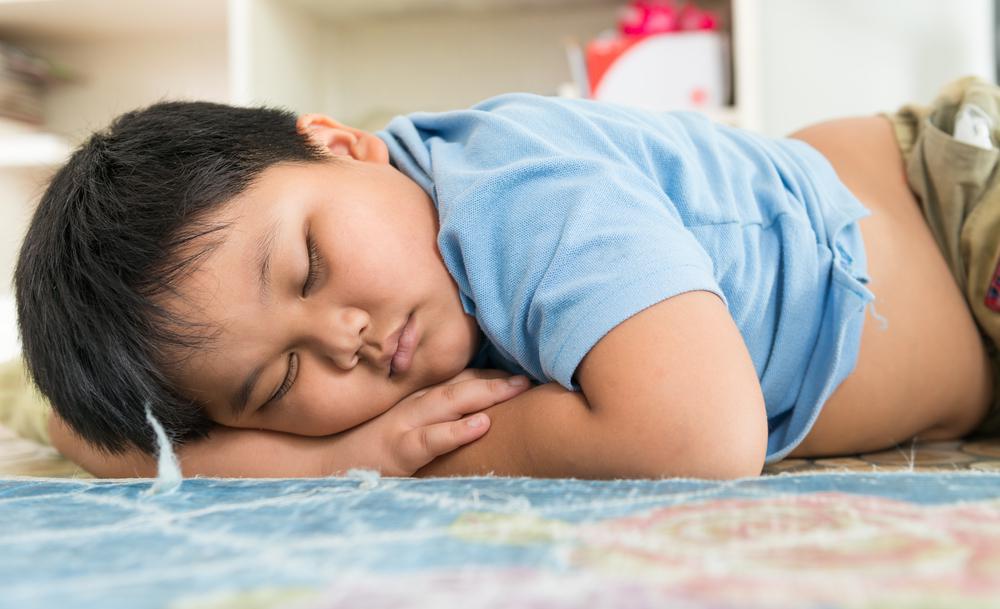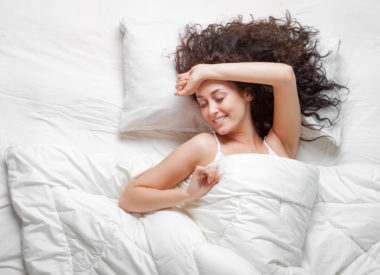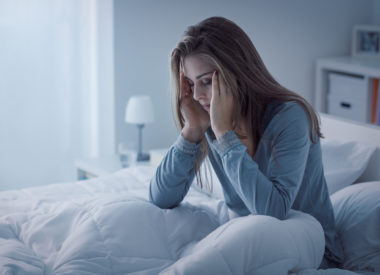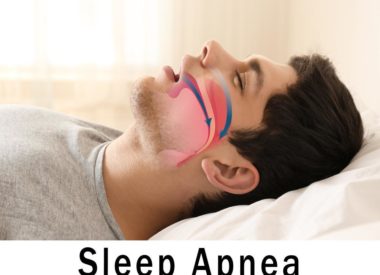Can kids have sleep apnea? Yes! Know the signs, symptoms & causes
Sleep apnea has long been considered a medical concern for older people, but the reality is quite different.
Children, from infancy to adolescence, can also suffer from sleep apnea.
According to American Family Physician , “Obstructive sleep-disordered breathing is common in children. From 3 percent to 12 percent of children snore, while obstructive sleep apnea syndrome affects 1 percent to 10 percent of children.”
However, ignoring the signs and symptoms of underlying obstructive sleep apnea in children as a problem “they’ll grow out of” is a mistake. ( What is obstructive sleep apnea or OSA? )
While some children might be able to escape a lifetime of sleep breathing problems once they’ve finished growing and developing, many do not. Regardless, those who have sleep apnea still suffer many of the same discomforts of uncontrolled OSA that bedevil their older counterparts.
Untreated sleep apnea threatens the overall health and well being of any child, leading to problems with behavior, obesity, chronic medical conditions like diabetes, depression, and much more.
Both parents and pediatricians need to be on the lookout for the signs, symptoms, and causes of childhood sleep apnea.
Note: We’ve batched together “sleep apnea signs” and “sleep apnea symptoms” below for good reason.
Signs are generally objective observations that someone can make about another person, who may be suffering from a health condition.
Symptoms are generally the subjective complaints coming from a person who may be suffering from a health condition.
When it comes to children and sleeping problems, they may be too young to articulate their symptoms about sleep problems, or unable to connect an underlying problem with sleep-disordered breathing to other symptoms they may experience.
Therefore, doctors must rely mostly on a parent’s more objective observations to gauge how to approach the sleep health problems of their youngest patients.
Signs and symptoms of sleep apnea in children
These are all indicators of underlying sleep apnea in children from toddler age to adolescence:
-
Bedwetting (especially if the child is potty-trained)
-
Unusual daytime sleepiness (especially for children who no longer need to nap)
-
Behavioral problems at school or home (which may be misdiagnosed as attention deficit or hyperactivity)
-
Excessive sweating at night (evidence of the whole-body stress response caused by sleep apnea)
-
Restless sleep (tangled sheets in the morning, complaints of not being able to sleep all night, nightmares)
-
Sleeping in unusual positions
-
Abnormal breathing during sleep (including noisy or heavy breathing, snoring, snorting, pauses in breathing, or gasping)
-
Difficulty awakening in the morning (younger children usually rise earlier than teens)
-
Daytime mouth breathing or nasal-sounding voice (which can indicate some craniofacial problems that disrupt the function of the upper airway)
(See below for details on how infant sleep apnea is different.)
Please don’t overlook snoring in children. It is frequently the most obvious sign of trouble breathing at night; snoring and sleep apnea are very commonly associated with one another.
It’s worth noting that when a doctor is observing a child suspected to have pediatric sleep apnea, they will also take into account or try to rule out other causes, as there are many different developmental concerns that can lead to sleep problems besides sleep-disordered breathing.
For instance, parents should not be surprised if a doctor asks them to take their child to an otolaryngologist (ear, nose, and throat specialist) to rule out cranial issues or adenotonsillar hypertrophy (enlarged tonsils in children).
Also, some families may need to pay a visit to a behavioral therapist to rule out attention deficit concerns, which have signs and symptoms which frequently mimic undiagnosed sleep apnea.
Causes of sleep apnea in children
These are, more or less, the same as the causes for sleep apnea in adults. However, children are constantly in the process of physical development, and while they may not show signs of overt sleep apnea at one age, they may go on to develop it at a later age as new changes take place.
Physiological obstructions of the upper airway, caused by oversized tissues or organs, are the most common reason for sleep apnea in toddlers as well as teens:
-
Tonsils and adenoids
-
Tongue
-
Uvula
-
Defects in the bony structures of the mouth, jaw, or throat
Risk factors for sleep apnea should be considered when investigating the possibility of sleep apnea in kids:
-
Family history ( sleep apnea runs in families due to shared physical features)
-
Untreated OSA can lead to obesity , and OSA can be caused by obesity
-
Certain other medical conditions can cause sleep-breathing disorders, such asDown syndrome
What is obesity-related hypoventilation?
You may have heard of the term Pickwickian syndrome . It describes obesity-hypoventilation syndrome (OHS),a problem among obese children who suffer from bothsleep-disordered breathing at night and chronic daytime problems with low blood oxygen.
As many as 90 percent of all pediatric patients with OHS suffer from obstructive sleep apnea, while the rest usually suffer from obesity-related hypoventilation during sleep, which is mostly characterized by central and mixed apneas. ( What are central apneas ?)
OHS is also known as cardiopulmonary syndrome , and researchers are making more efforts to identify and treat it in pediatric populations.
Why? Trends show increases in the incidence of childhood obesity worldwide. As the name suggests, ongoing untreated OHS can lead to chronic trouble with heart, vascular, and lung functions over the entire life span.
Is sleep apnea in babies different?
Yes. Babies have a very different sleep architecture than their older cohorts. It can be more difficult to identify apneas in infants as the frequency of these events often increases during “active” sleep (what we call “REM sleep” in adults).
Infants may also experience different kinds of apneas such as central, obstructive or mixed whereas older children generally experience obstructive apneas (unless they have concerns about OHS).
Babies are more inclined to have central apneas because their brains are still developing at a quick rate. In fact, it’s not uncommon for newborns to experience brief episodes of respiratory instability.
The immaturity of the brainstem can result in unstable signaling between the brain and the respiratory system during periods of sleep. These are known as central apneas ; they can often be followed by obstructive apneas . A breathing pattern of central apneas, followed by obstructive apneas, is defined as mixed apnea .
Smaller preemies generally experience more mixed apneas, whereas larger preemies and full-term newborns tend to have more central apneas. According to the American Academy of Sleep Medicine, obstructive apnea rarely occurs in healthy infants.
What’s most concerning about infant sleep apnea is not so much that it happens, but rather the frequency and severity of such events.
Erratic breathing patterns lead to dangerous complications, such as poor oxygen saturation in the bloodstream (known as hypoxemia ) and a dangerously slow pulse (known as bradycardia ).
In some cases, either of these complications can lead to loss of consciousness, requiring resuscitation, a scary prospect for parents.
Identifying the root cause of the sleep-breathing disorder is critical for infants with sleep apnea. Many medical conditions can cause sleep apnea or worsen it, such as:
-
Undersized or narrow upper airway passages
-
Acid reflux
-
Frequent or severe ear infection
-
Low blood iron
-
Residual effects of anesthesia
-
Certain drugs
-
The presence of previously undetected lung, metabolic, neurological, or seizure disorders
It’s important to know that infant sleep apnea is not an established risk factor for sudden infant death syndrome (SIDS), though a small percentage of children who die from this troubling and mysterious condition may encounter apnea symptoms prior to death.
The bottom line: Children with sleep apnea need to be treated
While Sound Sleep Health does not specialize in pediatric sleep medicine, we recognize that children with sleep apnea eventually grow up to become adults with sleep apnea. Sleep apnea is not a condition that all kids will simply grow out of, and the risks of untreated sleep apnea at any age are too great to avoid.
Concerned parents are encouraged to contact us for recommendations and referrals to local practitioners we admire and respect.
Sources:
American Academy of Otolaryngology
American Academy of Sleep Medicine
American Family Physician
KidsHealth (Nemours)
Medscape
National Sleep Foundation
Paediatrics & Child Health



